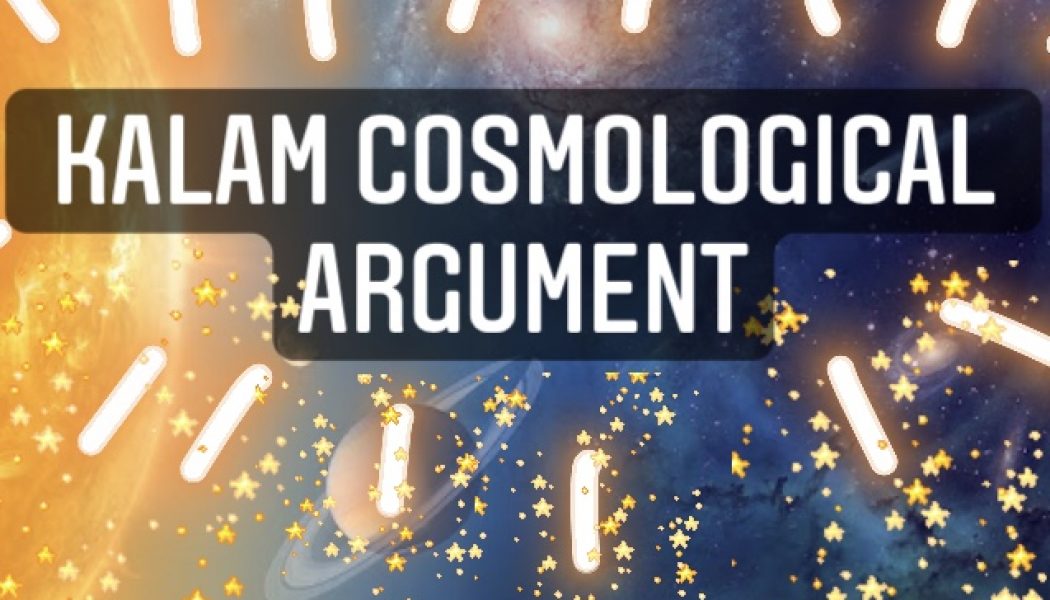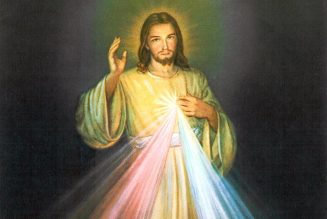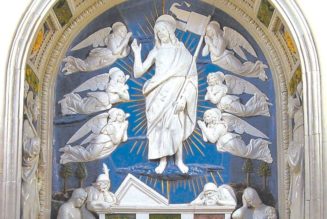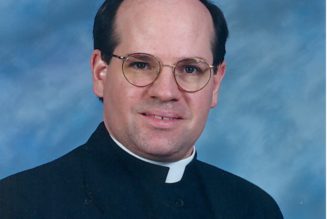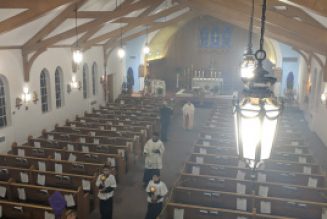 The Kalaam cosmological argument for God’s existence has been around for centuries.
The Kalaam cosmological argument for God’s existence has been around for centuries.
It hasn’t been that popular historically, with authors such as St. Thomas Aquinas pointing out problems with it. However, it has been popular in recent years, due principally to the advocacy of William Lane Craig.
I’ve written and spoken about it on a number of occasions, and I won’t review all that here, but I’d like to point out some problems with some recent defenses that involve a logical fallacy.
Stating the Argument Briefly
One way of putting the Kalaam argument is:
- Everything with a beginning has a cause.
- The universe has a beginning.
- Therefore, the universe has a cause.
- The cause of the universe, by definition, is God.
- Therefore, God exists.
In this article, the premise we’re interested in is line 2—that the universe has a beginning.
This has been argued both on scientific and philosophical grounds.
Modern Big Bang cosmology is consistent with the universe having a beginning, though—as Fr. George LeMaitre (the father of Big Bang cosmology) pointed out—it does not conclusively prove it.
The results of science are always provisional, so if you want a conclusive proof, you’ll need to demonstrate it philosophically and rely on logic rather than observation.
Consequently, defenders of the Kalaam argument have sought to prove by logic alone that the universe had a beginning.
Finding a Logical Contradiction?
From a Christian perspective, the question we need to ask is whether God could have created the world with an infinite history.
We know from Scripture that he did not. He created the universe at a specific point in the past, so it has a finite history.
The question is whether he could have created it with an infinite history if he chose. Is a universe with an infinite history something God would be able to bring about by his divine omnipotence?
Omnipotence allows God to create anything as long as it does not involve a logical contradiction—that is, as long as the terms involved do not contradict each other.
“Four-sided triangle” and “square circle” both involve logical contradictions (as does “stone too heavy for an omnipotent being to lift”), so God can’t create those as the terms involved are logical gibberish and don’t refer to conceptually possible entities. They’re just word salad.
This is St. Thomas’s point when he says that, “everything that does not imply a contradiction in terms, is numbered amongst those possible things, in respect of which God is called omnipotent: whereas whatever implies contradiction does not come within the scope of divine omnipotence, because it cannot have the aspect of possibility” (ST I:25:3; cf. SCG 2:25).
Therefore, if you want to say that God can’t create a universe with an infinite history, you’ll need to show that this concept involves a logical contradiction. If it doesn’t, then it’s something God can create.
The burden of proof thus falls to the Kalaam advocate to show that “universe with an infinite history” is self-contradictory.
Traversing the Infinite
A common strategy for doing this involves what is sometimes called “traversing an actual infinite.” The basic idea is this:
- Suppose that you start counting 1, 2, 3 . . .
- No matter how high you count, you will never arrive at infinity, because there is always a next number you can say.
- Therefore, the universe could not start infinitely far back in time, because you couldn’t start counting and cover an infinite series of moments to get up to the present. You thus can’t traverse an actually infinite series.
All of this is true.
It’s also irrelevant.
Notice what the argument says: “The universe could not start infinitely far back in time” and then traverse an infinity of time to the present.
The argument is assuming that the universe had a beginning—namely, one infinitely far back in time.
But that would not apply to a universe with an infinite history.
Understanding the Infinite
To see why, we need to remember the nature of the infinite. Derived from Latin roots, the word means “no” (in-) “limit” (finis). Something is infinite if it is lacking a limit or end.
For an ordered series, this can happen in one of three ways, as illustrated by the number line:
- The set of positive natural numbers has a limit at the beginning (i.e., the number 1) but no final limit. It just keeps going {1, 2, 3 . . .}.
- The set of negative natural numbers as a limit at the end (i.e., the number -1), but no starting limit, so it goes {. . . -3, -2, -1}.
- The set of all natural numbers (which also includes 0) has neither a beginning limit nor an ending limit, so it goes {. . . -3, -2, -1, 0, 1, 2, 3 . . .}.
Each of these three sets is infinite because they lack either a beginning limit, and ending limit, or both.
However, if an ordered series has both a beginning and an ending limit, then it isn’t infinite. Instead, it’s finite. Consider the sequence {6, 7, 8, 9}. This series is finite because it has both a beginning limit (6) and an ending limit (9). It is thus limited to the numbers between 6 and 9, making it finite (i.e., limited).
What’s Wrong with Traversing an Infinite?
With this in mind, we can see what’s wrong with the “Traversing an Infinite” argument, above.
It assumes that the universe had a beginning “infinitely far back in time” and then traversed an infinite series of moments to arrive at the present. In making these assumptions, it assumes both a beginning limit and a final limit. It therefore—by definition—describes a finite series.
If {H} is the set of moments in the universe’s history, then there can’t be both a first moment and a last (most recent) moment without {H} being a finite set.
The argument thus tells us nothing more than that a number can’t be both finite (limited) and infinite (unlimited).
We already knew that.
But it’s irrelevant to the issue of a universe with an infinite history.
We can agree that the universe’s history ends in the present, but if it had a beginning—however far back in time—then its history is, by definition, finite.
If a universe’s history ends in the present, it has a final limit. Therefore, for its history to be truly infinite, it must not have a beginning limit. Therefore, it has no beginning. It’s just always been there, with no first moment.
All this is pointed out by Aquinas, in summary form, when he writes that God could create a history containing an infinite number of previous revolutions of the sun, for “if the world had been always, there would be no first revolution. Wherefore there would be no passing through them, because this always requires two extremes” (SCG 2:38:11).
Therefore, you wouldn’t be traversing an infinity. When you traverse a distance, it must have both a starting and an ending point, making it finite. For it to be infinite into the past, it must have no beginning point. In that case, the universe would have always been approaching the present, without any moment that this trek began.
The First-and-Last Fallacy
It’s therefore a logical mistake—or fallacy—to apply a series with both a beginning and an end to the case of a universe with an infinite history.
Because this move involves there being both a first element and a last element in a supposedly infinite series, I will call it the “First-and-Last Fallacy.” Stated more formally:
The First-and-Last Fallacy occurs if and only if a person envisions a supposedly infinite series as having both a first and a last element.
A series can be infinite if it has only a first element, like the series {1, 2, 3 . . .}. Or it can be infinite if it has only a last element, like the series {. . . -3, -2, -1}. Or it can be infinite if it has neither a first and last element, like the series {. . . -3, -2, -1, 0, 1, 2, 3 . . .}.
But it can’t have both a first and last element and be infinite.
Unfortunately, the “Traversing an Infinite” argument isn’t the only one that commits the First-and-Last Fallacy.
Some recent philosophical defenses of the Kalaam argument also commit this fallacy. They are, in essence, alternate versions of the “Traversing an Infinite” argument presented in other guises.
The Grim Reaper Paradox
Alexander Pruss and Robert Koons have proposed what is known as the Grim Reaper Paradox, which can be formulated different ways. One way goes like this:
- There is a man named Fred, who is alive at 12:00 noon.
- However, in the next hour, he must face an infinite series of Grim Reapers with orders to kill him if he is not already dead.
- The final Grim Reaper will kill him at 1:00 p.m. if he is still alive then.
- But half an hour earlier, at 12:30, another Grim Reaper would kill him if he was still alive then.
- And a quarter hour before that, at 12:15, another Grim Reaper would kill him if he was still alive then.
- The rest of the infinite series of Grim Reapers are set to strike in increasingly shorter intervals, as we work our way back to 12:00 noon, when Fred was alive.
The question is: Which Grim Reaper kills Fred?
- He will definitely be dead by 1:00 p.m., because the final Grim Reaper will kill him.
- But that one shouldn’t be the answer, because he should have been killed by the 12:30 p.m. Grim Reaper.
- And that one shouldn’t have had to kill him, either, because of the 12:15 p.m. Grim Reaper, and so on.
- It thus looks like we can’t identify which Grim Reaper kills him, because there’s always a prior Grim Reaper who should have done the job.
Framed this way, the problem is essentially the same as asking “What’s the first moment of time after 12:00 noon?”—because that’s when Fred will encounter the first Grim Reaper and get killed.
But if time is infinitely divisible, there is no “first” moment after noon, because you can always specify a prior moment. If you say “1 second” after noon, you then could say “1/2 second earlier,” then “1/4 second earlier,” then “1/8 second earlier,” and so on.
We encounter the same problem on the number line. If you consider all the decimal numbers between 0 and 1, there is no limit to them, and there is no “first number after 0.” If you propose 0.1, you’ll have to face 0.01, then 0.001, then 0.0001, and so on. There’s always a number closer to 0 and thus there is no “first” number after 0.
That’s what’s required by an infinite series.
This reveals what’s wrong with the Grim Reaper Paradox. If the number of Grim Reapers Fred will encounter really is infinite, with the final one striking at 1:00 p.m., then there is no first Reaper. There can’t be if the series is truly infinite, just like there can be no “first element in the infinite series {. . . -3, -2, -1}” or a “first number after negative infinity.”
These are logically impossible entities.
The New Grim Reaper Paradox
Some have reformulated the Grim Reaper Paradox so that it doesn’t involve time compression between noon and 1 p.m.
For example, you could have the Grim Reapers strike on New Year’s Day. If Fred is alive on New Year’s Day 2021, a Grim Reaper will kill him. But there also was a Grim Reaper set to strike on New Year’s Day in every prior year, going back an infinite number of years in history.
The same issue then results. There is no first Reaper that kills Fred.
And that’s the problem: The thought experiment is proposing an entity that can’t exist, because it involves a logical contradiction.
There can’t be a first Grim Reaper in an infinite series that has a final limit any more than there can be a first number in the series {. . . -3, -2, -1}. That’s a contradiction in terms.
It’s therefore a logical impossibility.
The terms involved in the thought experiment entail a logical contradiction. The question “Who is the first Grim Reaper that Fred encounters in an infinite series of Reapers that ends at 1:00 p.m. on New Year’s Day 2021?” is the logical equivalent of “What is the first decimal number after 0?” or “How many angles does a 4-sided triangle have?”
These are all just word salad.
And the particular form of word salad in the Grim Reaper Paradox involves there being a first and a last Grim Reaper in a supposedly infinite series of them. It thus commits the First-and-Last Fallacy.
The Eternal Society Paradox
A similar, more recent paradox is proposed by Wade Tisthammer. It can be framed like this:
- Suppose there is a society that stretches infinitely far into the past (i.e., an eternal society).
- Every year, this society flips a coin.
- If the coin comes up “heads” (H) and it’s the first time it’s ever come up heads, they do a special chant to commemorate it being the first time heads has come up.
- If the coin comes up “tails” (T), they do nothing.
- Every combination of heads and tails is possible.
- One possible combination is that in every prior year of their infinite history, the coin has come up tails, until the most recent year, in which it comes up heads, so the series looks like {. . . T, T, T, T, T, T, H}. In this case, they get together and do their special chant to commemorate it being the first time heads has come up.
- Another possibility is that it comes up heads every year in their infinite history, so the series looks like {. . . H, H, H, H, H, H, H}.
- In that case, when did they do the special chant to commemorate the first time heads came up? It can’t be in any of these years, because heads had occurred in every prior year.
It’s worth pointing out that an infinite series of heads is only possible. It’s not guaranteed, and so the paradox might not arise in actual history. If God has a rule that prevents logical contradictions from arising—a logical equivalent of the Chronology Protection Conjecture—then one could argue that the series {. . . H, H, H, H, H, H, H} will never arise.
However, we don’t need to go that route, because, after what we’ve seen, the solution is straightforward: The Eternal Society Paradox is presupposing a logical contradiction.
It’s asking “What is the first heads in an infinite series of head flips that has a final limit?”
If an infinite series has a final element, then it can’t have a first element—by definition.
Once again, we’re dealing with the equivalent of “What’s the first decimal number after 0?” or “How many angles does a four-sided triangle have?” The thought experiment presupposes an entity that involves a logical contradiction and thus cannot exist.
It presupposes a first and a last element to a supposedly infinite series, so the Eternal Society Paradox commits the First-and-Last Fallacy.
Physicalizing the Infinite
We’ve looked at three philosophical arguments that the universe must have a finite history:
- Traversing an Infinite
- The Grim Reaper Paradox
- The Eternal Society Paradox
Each one involves the First-and-Last Fallacy, though they present it in different physical terms. They thus physicalize it in different ways and correspondingly ask different questions:
- Traversing an Infinite asks us to envision a starting point to the universe’s infinite history and then asks how we could cross that by traversing an infinite number of moments to get to the present. The answer to this question is that we couldn’t. You can’t cross an infinite series by successive addition. However, this is irrelevant because—if the universe has an infinite history terminating in the present—then there was no first moment when the journey began. The universe has just always been there, getting progressively closer to the present.
- The Grim Reaper Paradox asks us to envision an infinite series of Grim Reapers that end at a certain moment (say, 1:00 p.m. on New Year’s Day 2021) who are all ordered to kill Fred if he hasn’t already been killed. It then asks who is the first Grim Reaper to encounter Fred and kill him. Answer: None of them. There is no first Reaper in an infinite series that terminates at a certain moment. Such a Reaper is a logically impossible entity—as is “an infinite series of Reapers with a first and last element.” Such a self-contradictory series cannot exist, and thus cannot harm Fred. He’s either alive or not, regardless of the word salad entity that’s supposed to confront him.
If a series of Reapers is truly infinite into the past, then Fred has simply never lived, except for the window between his birth and when the next Reaper was timed to strike.
- The Eternal Society Paradox invites us to consider an infinite series of coin tosses that all turn up heads and that ends in the present. It then asks us when the Eternal Society did its special chant to commemorate the first time the coin came up heads. Answer: Never. There was no “first time” the coin came up heads. “First heads flip in an infinite series of head flips ending in the present” is a logically impossible entity. Therefore, in physical terms, the Eternal Society would never have done their chant to commemorate the first heads flip, because there wasn’t one.
Each of these thought experiments presupposes an entity that involves a contradiction in terms—a series that has both a first element and a last element and yet is supposed to be infinite.
They may then go on to ask questions about an element in this series, which also involves a logical contradiction (e.g., “What’s the first element in an infinite series that has a final limit?”).
But this is a nonsensical question, just like “What’s the first number after negative infinity?”, “What’s the last number before positive infinity?” or “If there were a four-sided triangle, what size would it be?”
In view of how easy it is to fall into the First-and-Last Fallacy, advocates of the Kalaam argument who wish to support it with philosophical proofs need to carefully examine their arguments to see whether they are envisioning a scenario that presupposes both a first and a last element in a supposedly infinite series.
Join Our Telegram Group : Salvation & Prosperity
